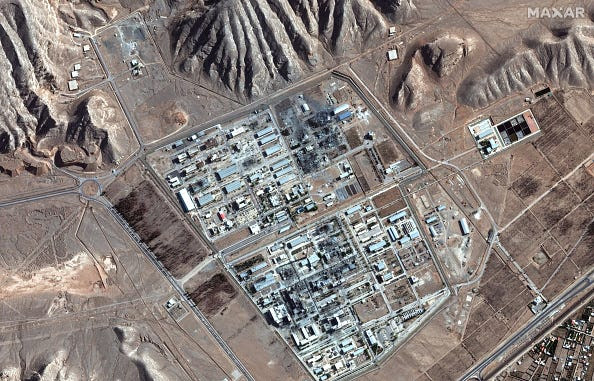Alberta
Alberta extracting more value from oil and gas resources: ATB

From the Canadian Energy Centre
By Will Gibson
Investment in ‘value-added’ projects more than doubled to $4 billion in 2024
In the 1930s, economist Harold Innis coined the term “hewers of wood and drawers of water” to describe Canada’s reliance on harvesting natural resources and exporting them elsewhere to be refined into consumer products.
Almost a century later, ATB Financial chief economist Mark Parsons has highlighted a marked shift in that trend in Alberta’s energy industry, with more and more projects that upgrade raw hydrocarbons into finished products.
ATB estimates that investment in projects that generate so-called “value-added” products like refined petroleum, hydrogen, petrochemicals and biofuels more than doubled to reach $4 billion in 2024.
“Alberta is extracting more value from its natural resources,” Parsons said.
“It makes the provincial economy somewhat more resilient to boom and bust energy price cycles. It creates more construction and operating jobs in Alberta. It also provides a local market for Alberta’s energy and agriculture feedstock.”
The shift has occurred as Alberta’s economy adjusts to lower levels of investment in oil and gas extraction.
While overall “upstream” capital spending has been rising since 2022 — and oil production has never been higher — investment last year of about $35 billion is still dramatically less than the $63 billion spent in 2014.
Parsons pointed to Dow’s $11 billion Path2Zero project as the largest value-added project moving ahead in Alberta.
The project, which has support from the municipal, provincial and federal governments, will increase Dow’s production of polyethylene, the world’s most widely used plastic.
By capturing and storing carbon dioxide emissions and generating hydrogen on-site, the complex will be the world’s first ethylene cracker with net zero emissions from operations.
Other major value-added examples include Air Products’ $1.6 billion net zero hydrogen complex, and the associated $720 million renewable diesel facility owned by Imperial Oil. Both projects are slated for startup this year.
Parsons sees the shift to higher value products as positive for the province and Canada moving forward.
“Downstream energy industries tend to have relatively high levels of labour productivity and wages,” he said.
“A big part of Canada’s productivity problem is lagging business investment. These downstream investments, which build off existing resource strengths, provide one pathway to improving the country’s productivity performance.”
Heather Exner-Pirot, the Macdonald-Laurier Institute’s director of energy, natural resources and environment, sees opportunities for Canada to attract additional investment in this area.
“We are able to benefit from the mistakes of other regions. In Germany, their business model for creating value-added products such as petrochemicals relies on cheap feedstock and power, and they’ve lost that due to a combination of geopolitics and policy decisions,” she said.
“Canada and Alberta, in particular, have the opportunity to attract investment because they have stable and reliable feedstock with decades, if not centuries, of supply shielded from geopolitics.”
Exner-Pirot is also bullish about the increased market for low-carbon products.
“With our advantages, Canada should be doing more to attract companies and manufacturers that will produce more value-added products,” she said.
Like oil and gas extraction, value-added investments can help companies develop new technologies that can themselves be exported, said Shannon Joseph, chair of Energy for a Secure Future, an Ottawa-based coalition of Canadian business and community leaders.
“This investment creates new jobs and spinoffs because these plants require services and inputs. Investments such as Dow’s Path2Zero have a lot of multipliers. Success begets success,” Joseph said.
“Investment in innovation creates a foundation for long-term diversification of the economy.”
Alberta
Alberta school boards required to meet new standards for school library materials with regard to sexual content

Alberta’s government has introduced new standards to ensure school library materials are age-appropriate.
School libraries should be safe and supportive places where students can learn and explore without being exposed to inappropriate sexual content. However, in the absence of a consistent standard for selecting age-appropriate library materials, school boards have taken different approaches, leading to concerns about safeguards in place.
In response to these concerns, and informed by feedback from education partners and the public, Alberta’s government has created standards to provide school boards with clear direction on the selection, availability and access to school library materials, such as books.
“Our actions to ensure that materials in school libraries don’t expose children to sexual content were never about banning books. These new standards are to ensure that school boards have clear guidance to ensure age-appropriate access to school library materials, while reflecting the values and priorities of Albertans.”
The new standards set clear expectations for school library materials with regard to sexual content and require school boards to implement policies to support these standards.
Standards for school library materials
Under the new standards, school libraries are not permitted to include library materials containing explicit sexual content. Non-explicit sexual content may be accessible to students in Grade 10 and above, provided it is age-appropriate.
“Protecting kids from explicit content is common sense. LGBTQ youth, like all children, deserve to see themselves in stories that are age-appropriate, supportive and affirming – not in material that sexualizes or confuses them.”
School boards must also regularly review their school library collections, publish a full list of available materials and ensure that a staff member supervises students’ access to school library materials. School boards will have to remove any materials with explicit sexual content from their school libraries by October 1.
School board policies and procedures
All school boards must have publicly available policies that align with the new standards for selecting and managing library materials by January 1, 2026. School boards can either create new policies or update existing ones to meet these requirements.
These policies must outline how school library materials are selected and reviewed, how staff supervise students’ access throughout the school day, and how a student, parent, school board employee or other member of the school community can request a review or removal of materials in the school library. School boards are also required to clearly communicate these policies to employees, students and parents before January 2026.
“A robust, grade- and age-appropriate library catalogue is vital for student success. We welcome the ministry’s initiative to establish consistent standards and appreciate the ongoing consultation to help craft a plan that will serve our families and communities well.”
“Red Deer Public Schools welcomes the new provincial standards for school library materials. Our division is committed to maintaining welcoming, respectful learning spaces where students can grow and thrive. Under the new standards for school libraries, we remain dedicated to providing learning resources that reflect our values and support student success.”
Quick facts
- The new standards will apply to public, separate, francophone, charter and independent schools.
- The ministerial order does not apply to municipal libraries located within schools or materials selected for use by teachers as learning and teaching resources.
- From May 26 to June 6, almost 80,000 people completed an online survey to provide feedback on the creation of consistent standards to ensure the age-appropriateness of materials available to students in school libraries.
Related information
- Ministerial Order
- School library standards engagement
- Reference Materials: Content warning: this document contains graphic content that may be disturbing to viewers and is not appropriate for young viewers. Viewer discretion is advised.
Alberta
Fourteen regional advisory councils will shape health care planning and delivery in Alberta

Regional health councils give Albertans a voice
Albertans want a health care system that reflects where they live and adapts to the unique needs of their communities. As part of the province’s health care refocus, Alberta’s government committed to strengthening community voices by providing more opportunities for Albertans to bring forward their local priorities and offer input on how to improve the system.
The regional advisory councils, made up of 150 members from 71 communities, will advise Alberta’s four health ministries and the newly refocused health agencies: Primary Care Alberta, Acute Care Alberta, Assisted Living Alberta and Recovery Alberta. Each council will explore solutions to local challenges and identify opportunities for the health system to better support community decision-making.
“By hearing first-hand community feedback directly, we can build a system that is more responsive, more inclusive and ultimately more effective for everyone. I am looking forward to hearing the councils’ insights, perspectives and solutions to improve health care in all corners of our province.”
“Regional advisory councils will strengthen acute care by giving communities a direct voice. Their insights will help us address local needs, improve patient outcomes and ensure timely access to hospital services.”
“A ‘one-size-fits-all’ approach does not address unique regional needs when it comes to mental health and addiction challenges. These councils will help us hear directly from communities, allowing us to tailor supports and services to meet the needs of Albertans where they are.”
“Every community has unique needs, especially when it comes to seniors and vulnerable populations. These regional advisory councils will help us better understand those needs and ensure that assisted living services are shaped by the people who rely on them.”
Members include Albertans from all walks of life, health care workers, community leaders, Indigenous and municipal representatives, and others with a strong tie to their region. About one-third of members work in health care, and more than half of the council chairs are health professionals. Almost one-quarter are elected municipal officials, including 10 serving as chairs or vice-chairs. Ten councils also include a representative from a local health foundation.
Council members will share local and regional perspectives on health care services, planning and priorities to help ensure decisions reflect the realities of their communities. By engaging with residents, providers and organizations, they will gather feedback, identify challenges and bring forward ideas that may not otherwise reach government.
Through collaboration and community-informed solutions, members will help make the health system more responsive, accessible and better able to meet the needs of Albertans across the province.
“As Primary Care Alberta works to improve access to primary health care services and programs across Alberta, we are grateful to have the opportunity to tap into a dedicated group of community leaders and representatives. These people know their communities and local needs, and we look forward to learning from their experiences and knowledge as we shape the future of primary care in Alberta.”
“The regional advisory councils will help to bring forward the voices of patients, families and front-line providers from every corner of Alberta. Their insights will help us plan smarter and deliver care that’s timely, effective and truly local. We look forward to working closely with them to strengthen hospital and surgical services across the province.”
“Nobody understands the health care challenges unique to a community better than the people who live there. The regional health advisory councils are made up of those living and working on the front lines across the province, ensuring we are getting the perspective of Albertans most affected by our health care system.”
“Alongside Recovery Alberta’s staff and physician team, these regional advisory councils will build upon the high standard of mental health, addiction and correctional health services delivered in Alberta.”
Indigenous Advisory Council
Alberta’s government continues to work directly with Indigenous leaders across the province to establish the Indigenous Advisory Council to strengthen health care services for First Nation, Métis and Inuit communities.
With up to 22 members, including Indigenous health care workers, community leaders and individuals receiving health care services, the council will represent diverse perspectives across Alberta. Members will provide community perspectives about clinical service planning, capital projects, workforce development and cultural integration in health care.
Related information
-

 Business1 day ago
Business1 day agoWEF-linked Linda Yaccarino to step down as CEO of X
-

 Automotive2 days ago
Automotive2 days agoFederal government should swiftly axe foolish EV mandate
-

 Crime2 days ago
Crime2 days agoTucker Carlson: US intelligence is shielding Epstein network, not President Trump
-

 International2 days ago
International2 days agoNo more shoes off: Trump ends TSA’s decades-old rule
-

 Alberta2 days ago
Alberta2 days ago‘Far too serious for such uninformed, careless journalism’: Complaint filed against Globe and Mail article challenging Alberta’s gender surgery law
-

 Freedom Convoy2 days ago
Freedom Convoy2 days agoCourt Orders Bank Freezing Records in Freedom Convoy Case
-

 Business1 day ago
Business1 day ago‘Experts’ Warned Free Markets Would Ruin Argentina — Looks Like They Were Dead Wrong
-

 Automotive1 day ago
Automotive1 day agoAmerica’s EV Industry Must Now Compete On A Level Playing Field






